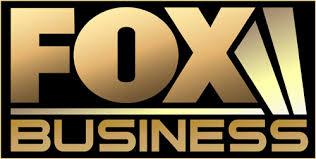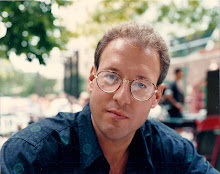 Whose Idea Is It, Anyway?
Whose Idea Is It, Anyway?Think I'm wrong? Check it out. Ask yourself, "What is a category?" Answer: A category is a bunch of brands all hanging out on a street corner all doing and saying the same things about themselves differently. If you were not in the category, or "something else," you wouldn't be IN the category.
Classic example: Folgers vs. Maxwell House
Years ago I was called to Procter & Gamble to assess a new, yet to be aired campaign with the global manager of advertising and market research. He unveiled a character named Mrs. Olson who was going to say, "Drink Mountain Grown Folgers. It's the richest kind." Mountain Grown was supposed to be the support point to the contention that Folgers was the "richest kind of coffee." Asked what I thought I said he and P&G were going to loose their shirts because they were just copying Maxwell House and "good to the last drop" by saying the same thing differently. He scoffed and produced research "proving" that this was a highly differentiating top-two box intent-to-purchase campaign.
So I had to break it down for him and all the suits who need things distilled to one word bullet points for powerpoint presentations.
I said look, you say your are the richest kind. The richest kind of what? COFFEE. What about your coffee is the richest kind? THE FLAVOR and AROMA. So for all the MBAs who need things in one word bullet points you are talking about the SENSORY selling dimension. How do foods and beverages look, touch, taste smell and feel.
Now lets look at Maxwell House. They say they're good to the last drop. What's good to the last drop? The COFFEE. What about the coffee is good to the last drop? THE FLAVOR and AROMA. So Maxwell House is talking about the SENSORY selling dimension too. You can't ever copy the leader and beat them. "You have to identify a different selling dimension that is more resonant and relevant to your audience - which is exactly the kind of homework we do."
He didn't listen. The campaign was launched and at the end of the year and at the end of the money not a single incremental pound of Folgers had been sold. I was called back to P&G, this time by the Division President and company Chairman who commissioned our company to do a little proprietary jargon-laden "homework."
By stimulating consumer minds with hundreds of product potentials, consumers began to talk about ground roast coffee in ways the client and agency had not previously heard. Heavy ground roast coffee consumers (the 20% of the audience that account for 85% of the volume) said that they needed their caffeine in the morning "to work and play well with others." Very Dale Carnegie. At work they consumed caffeine in the morning because product usage helped them "show their bosses they saw things other people miss." (Kind of prophetic) Understanding Monday to Friday consumption we inquired about weekends. Respondents stated that if their spouses or girlfriends tried to get them to do or say something before they had their first cup of caffeine, that would start an argument that would last all weekend. They needed the caffeine "to improve the human condition." The synthesis of all this thought led us to state, "We see, the best part of waking up is caffeine in your cup." The brand group went wild. "You can't sell this as a drug!" So we changed the words to the best part of waking up is Folgers in your cup. And that's how Folgers came to own the morning daypart.
Now THAT'S INTELLECTUAL PROPERTY YOU CAN PROTECT because it "differentiates." Rather than focus on taken for granded cost-of-entry SENSORY parameters no one could protect (of course you have to do and be these things) it became far more profitable and effective to focus on the CONTROL selling dimensions pertinent to heavy ground roast coffee consumers. That's the IP!
And in all these year no other GRC brand caught on until recently when Starbucks finally got it with their "THINK EARLIER" campaign. Also control oriented. Now P&G wants to sell the brand. Maybe they can't find an agency to take the business to the next level. I just believe they need to do new homework. The only thing that's happened is that the product and campaign have matured in their lifecycles once again. The brand really hasn't done any homework since 1982. So what's beyond SENSORY and CONTROL? What is relevant and resonant to their heavy user today? There lay the IP.
Martin Calle is an expert witness in marketing and advertising related Intellectual Property matters. As Chief Differentiation Strategist at Calle & Company Martin is currently writing a book for the holidays called "SEARCH SATISFACTION: Why marketers stop looking for better ideas once they find solutions they like."











1 comment:
Hi Martin! That was a fascinating post on Folgers and the brand building process. I am amazed how many coffee brands I see here in Taipei, Taiwan. Hundreds of them -- all stacked up there on the shelves in the supermarkets. Lavazza, whose coffee is great -- apparently the most popular coffee in Italy, has already started to close down some of its stores here in Taiwan, only to be replaced by a locally owned brand called "Barista." What a shame! I am still not sure what you mean by the term "control," is this referring to the non-core attributes? That is, the bits that are unique to a particular brand?
Post a Comment